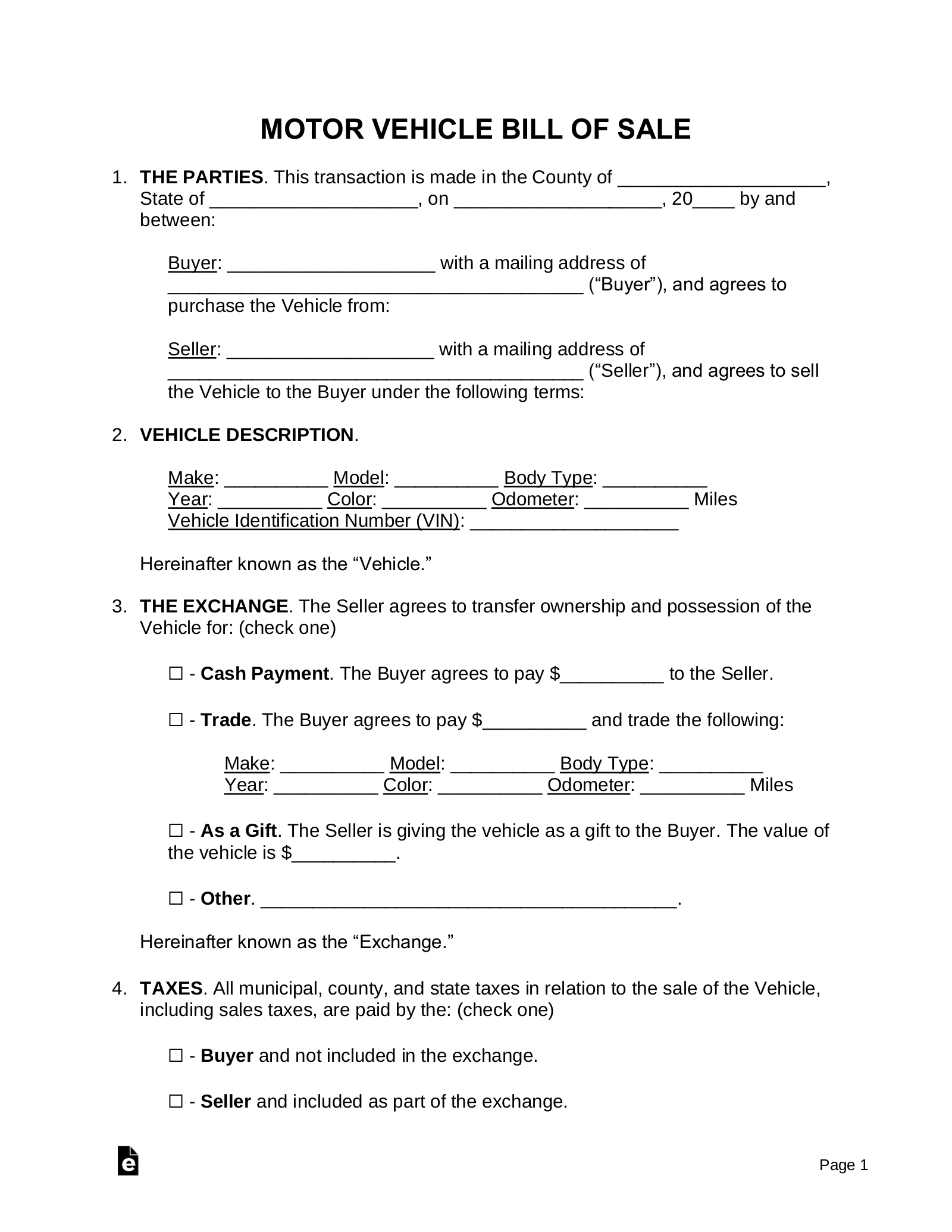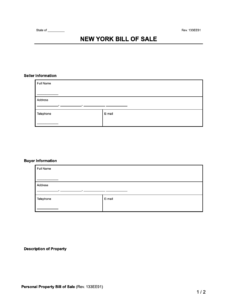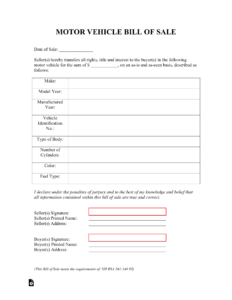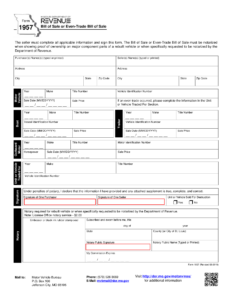Navigating the waters of a private vehicle sale or purchase can feel like a big undertaking. Beyond finding the right car or buyer, there’s a crucial piece of documentation that often gets overlooked: the bill of sale. While it might seem like a mere formality, having a well-drafted bill of sale is absolutely essential for both parties involved, providing a clear record of the transaction and protecting everyone’s interests.
Think of it as your official paper trail, confirming the transfer of ownership from one individual to another. It’s more than just a receipt; it’s a legal document that can save you from potential headaches down the road. Whether you’re the one handing over the keys or receiving them, understanding what goes into this document and why it’s so important is your first step towards a smooth, secure, and worry-free exchange.
Why You Need a Private Vehicle Bill of Sale
When you’re selling a vehicle privately, the moment money changes hands and the car is driven away, you want to be sure your legal ties to it are completely severed. A robust private vehicle bill of sale template provides undeniable proof that you no longer own the car, effectively transferring responsibility and liability to the new owner. This is incredibly important for things like traffic violations, accidents, or even abandoned vehicle issues that might arise after the sale. Without this documentation, you could potentially be held accountable for incidents involving a car you no longer possess.

Conversely, as a buyer, this document is your primary evidence of ownership. It’s what you’ll need to officially register the vehicle in your name with the Department of Motor Vehicles (DMV) or equivalent state agency. Without a properly executed bill of sale, you might face significant delays or even be unable to legally register your new purchase, leaving you in a tricky situation where you own a car but can’t drive it legally on public roads. It also serves as proof of the purchase price, which can be vital for tax purposes or in the event of any disputes over the vehicle’s condition or agreed-upon value.
Furthermore, a detailed bill of sale clarifies the terms of the sale, preventing misunderstandings or disagreements later on. It specifies the “as-is” condition of the vehicle if that’s the agreement, meaning the buyer accepts the car with all its existing faults, and the seller isn’t providing any warranties. This clause is a common and important part of private vehicle transactions, offering peace of mind to the seller that they won’t be held liable for mechanical issues that crop up after the sale is finalized.
Ultimately, neglecting this simple step can lead to complex legal issues and unnecessary stress for both parties. It’s a small investment of time that offers immense protection and clarity, ensuring that your private vehicle transaction is clear, legitimate, and legally sound from start to finish.
Key Elements to Include
How to Use and Customize Your Private Vehicle Bill of Sale Template
Using a private vehicle bill of sale template is straightforward, but accuracy is paramount. Start by gathering all the necessary information for both the buyer and the seller, including their full legal names, current addresses, and contact details. Then, meticulously fill in the vehicle’s specifics. This isn’t just about the make and model; you need the exact year, body type, color, and the all-important Vehicle Identification Number (VIN). The VIN is like the car’s fingerprint, unique to that specific vehicle, and essential for official records. Don’t forget to record the odometer reading precisely at the moment of sale, as this is a common point of contention or misrepresentation.
Once all the personal and vehicle details are accurately entered, specify the agreed-upon sale price. It’s a good practice to write this amount out in words as well as numbers to prevent any potential confusion or alteration. The date of the transaction is equally vital, as it marks the official transfer of ownership. Before signing, both parties should carefully review every single detail to ensure everything is correct and reflects the terms of their agreement. This thorough review helps to catch any errors that could cause problems later on.
It’s also important to be aware of any state-specific requirements. While a general private vehicle bill of sale template is a great starting point, some states might have specific forms they prefer or require, or they might mandate a notary public’s signature to validate the document. Always check with your local DMV or motor vehicle department website to confirm any additional steps or forms needed in your particular state or region. This quick check can save you a lot of time and hassle down the line when you go to register the vehicle.
After both parties have signed the document, make sure to create multiple copies. Both the buyer and the seller should retain an original signed copy for their records. The buyer will need their copy for vehicle registration and titling purposes, while the seller needs theirs as proof they no longer own the vehicle, which is crucial for liability and tax purposes. Storing these documents securely, perhaps with other important financial or vehicle records, is a smart move, ensuring they are easily accessible should any questions or issues arise in the future.
Employing a comprehensive bill of sale streamlines the process for everyone, minimizing potential disputes and providing both parties with the necessary documentation for legal compliance and peace of mind. It’s a simple yet powerful tool that ensures transparency and protects your interests in any private vehicle transaction. By taking the time to complete and understand this document, you’re setting yourself up for a smooth transition of ownership, free from unexpected complications.



